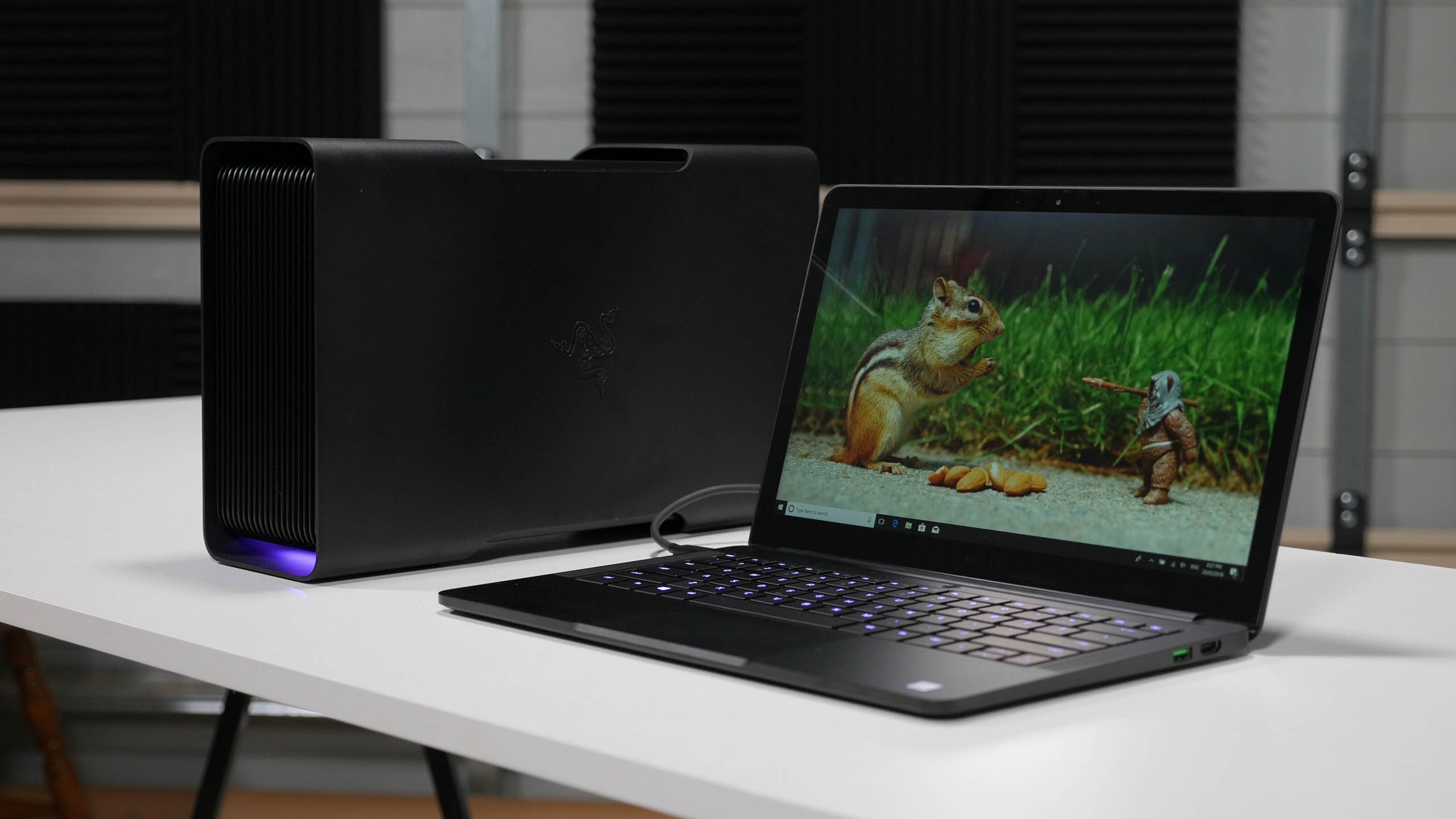Blade Stealth Performance
The key upgrade to performance is the Intel Core i7-8550U, which I've covered a couple of times before. Compared to previous 7th-gen U-series CPUs, the 8550U bumps us up from two cores and four threads to four cores and eight threads in the same 15W power envelope, which is a huge improvement for these sorts of systems. Clock speeds for this chip range from 1.8 GHz base to 4.0 GHz boost, plus there's integrated UHD 620 graphics.
One of the key things to note with the Core i7-8550U is its configurable TDP, allowing manufacturers to choose a power limit anywhere from 10 to 25 watts depending on the cooling capabilities and battery requirements. The Razer Blade Stealth uses the default 15 watts here, which we also saw with the HP Spectre x360.
However unlike the Spectre x360, the Blade Stealth actually has a reasonable cooler, so it can sustain higher clock speeds. In a typical Cinebench run, core clocks are approximately 300 MHz higher with the Blade Stealth and temperatures more manageable. As a result, performance is almost always superior.

Looking at the actual Cinebench results, the Razer Blade Stealth ends up 3 percent ahead of the Spectre x360 in the multi-threaded workload and 9 percent faster when looking at the single-threaded test. However, the laptop does fall 18 percent behind the Dell XPS 13 in the multi-threaded test, as the XPS 13 uses the maximum 25W cTDP up state and as a result, sustains higher clock speeds.


In x264 video encoding, we're once again 18 percent slower than the Dell XPS 13, however we are at least 5 percent ahead of the HP Spectre x360, and fall closer to what we expect for the 15W variant.

In the Excel Monte Carlo workload, the Blade Stealth beats the Spectre x360 by 8 percent and even outperforms the XPS 13 by 4 percent. The Blade Stealth does sustain the maximum all-core turbo frequency of 3.7 GHz for slightly longer than the same CPU in the XPS 13, which is why we're seeing the XPS 13 get beaten narrowly in this short workload.


Premiere is another great result for the Blade Stealth, beating the Spectre x360 by 13 percent with Lumetri effects and outperforming the XPS 13 by 5 percent, which is a surprise. However looking at Photoshop with the Iris Blur effect, the Blade Stealth is 5 percent behind the XPS 13 and equal to the Spectre x360.

Blender is probably not a workload you'd usually run on an ultraportable but results are interesting nonetheless. Here the Blade Stealth is 6 percent faster than the Spectre x360 but 16 percent behind the XPS 13.

MATLAB favors high clock speeds and high, quick boost speeds. Here the Blade Stealth delivers roughly the same performance as the XPS 13 and a narrow 3 percent more than the Spectre x360. Among laptops, there's not a lot of variance between these results and of course we're talking about run times in the miliseconds.


The Blade Stealth also performs well in 3DMark, delivering 9 percent more performance than the Spectre x360 and around 4 percent less than the XPS 13 in the GPU-limited Sky Diver test. You won't want to play many titles on the integrated UHD 620 graphics, though there is a clear difference in performance between different models depending on their cooling solutions.




Perhaps the worst results for the Blade Stealth are the PCMark tests, which fall behind both the Spectre x360 and the Dell XPS 13. As a more general system benchmark, it's disappointing to see the Blade Stealth not perform a bit better here, especially considering the other workloads we benchmark with.
On average, the Blade Stealth is four percent faster than the HP Spectre x360, though this is skewed slightly by the PCMark results. In longer workloads, particularly encoding, the Blade Stealth holds a decent 9 percent performance lead and that's the product of its superior cooler under the same TDP.
The results compared to the Dell XPS 13 are interesting, falling 3 percent behind on average, though this balloons to 11 percent in longer workloads. As the Razer Blade Stealth boosts higher for longer in shorter workloads, it actually outperforms the XPS 13 on average in these shorter tests.
Of course it's also worth discussing how the Razer Blade Stealth with the i7-8550U compares to the previous model with the i7-7500U. On average we're seeing a 30 percent performance improvement, which is huge for a single generation, with better performance seen in shorter workloads though still very impressive gains in longer and multi-threaded workloads.


Like a lot of ultraportable manufacturers, Razer has opted to use a Samsung PM961 PCIe NVMe SSD, which is a top-end drive capable of outstanding performance. Sequential reads and writes are well above 1 GB/s, while random performance is very good, falling towards the top of the charts.
